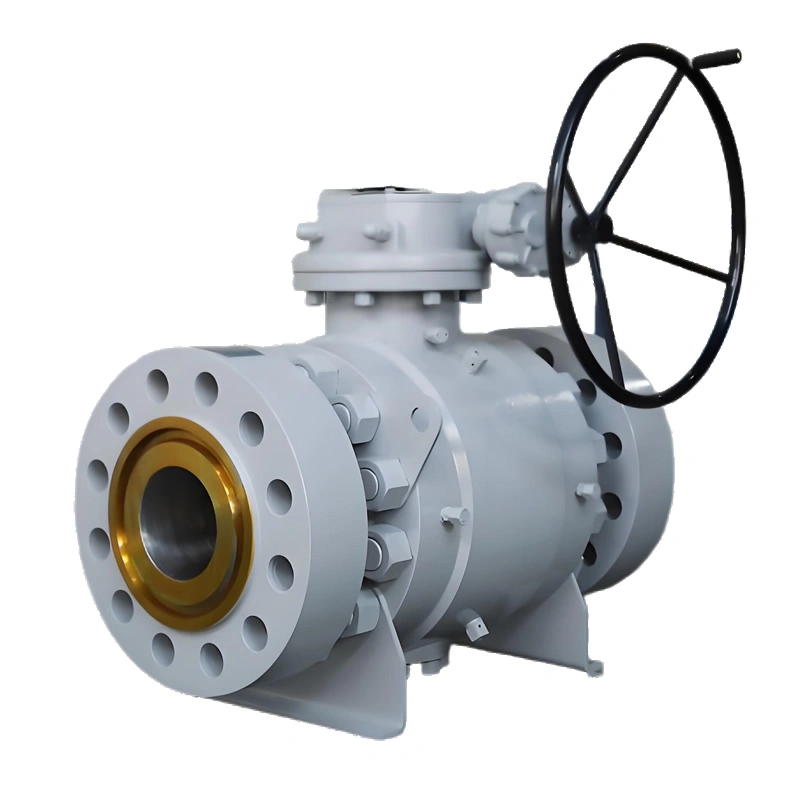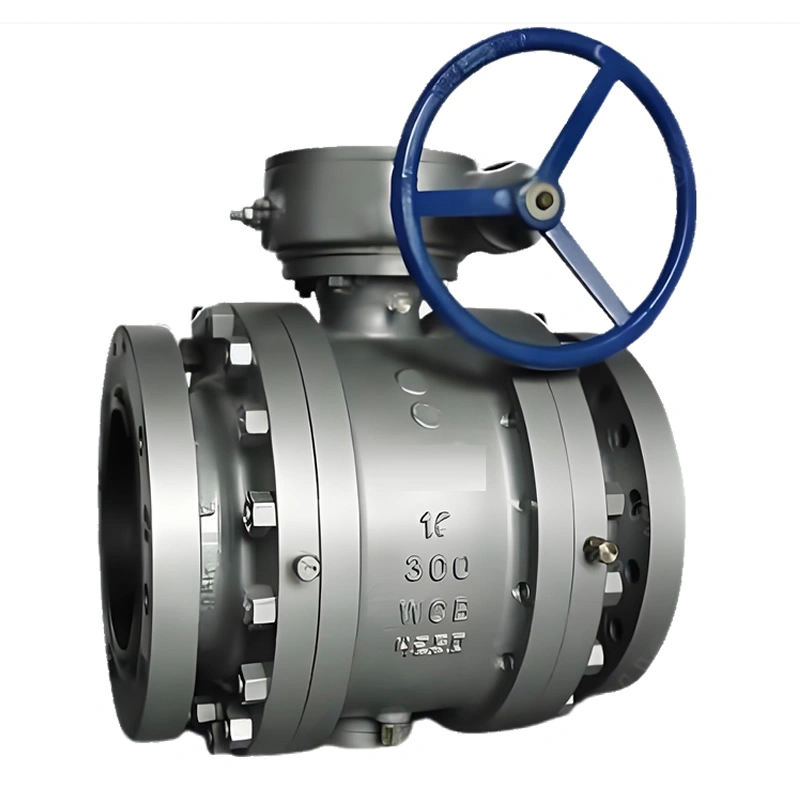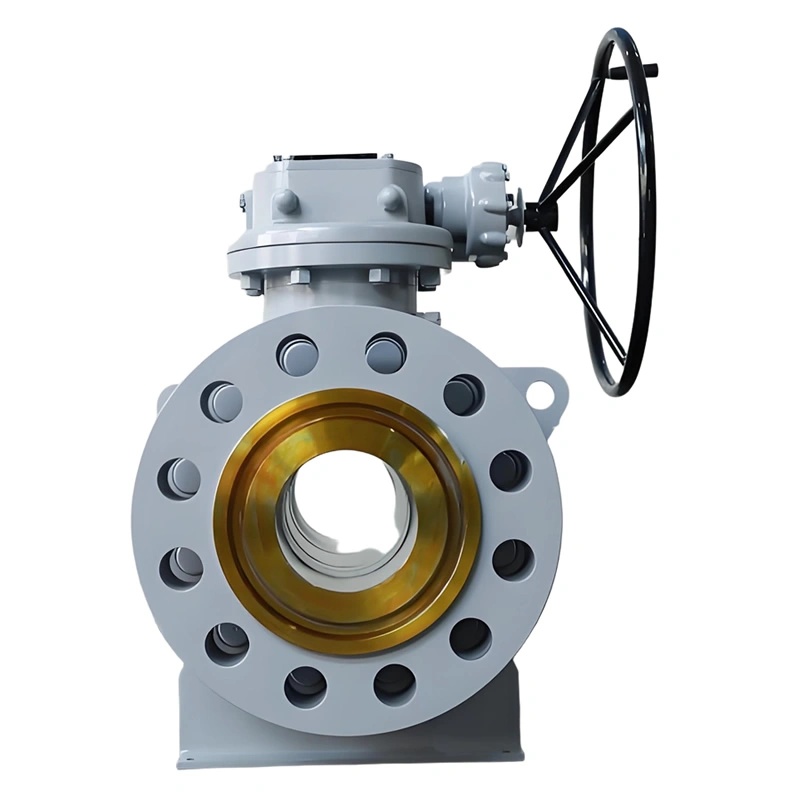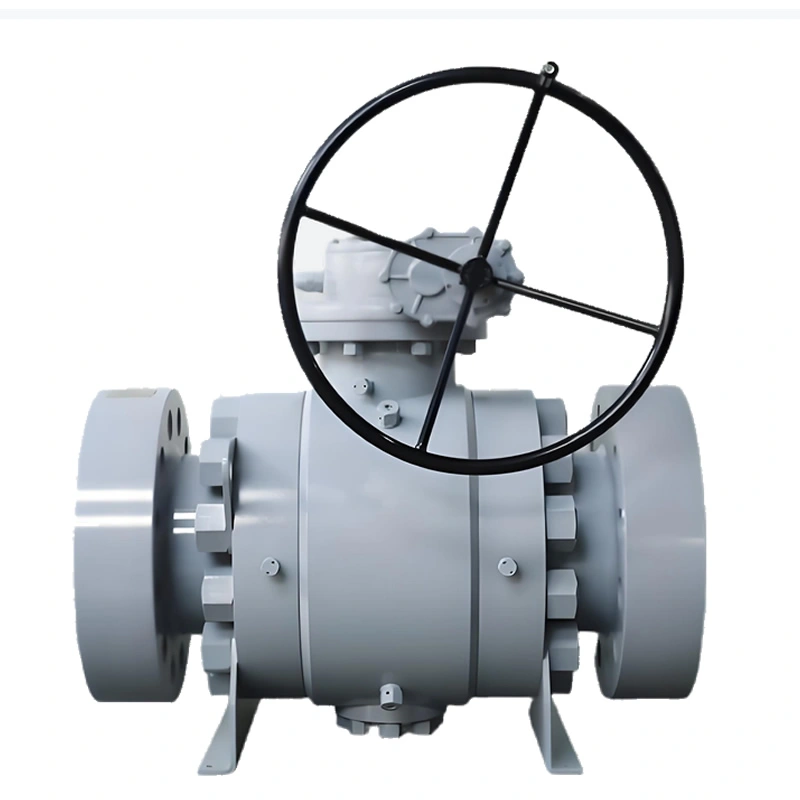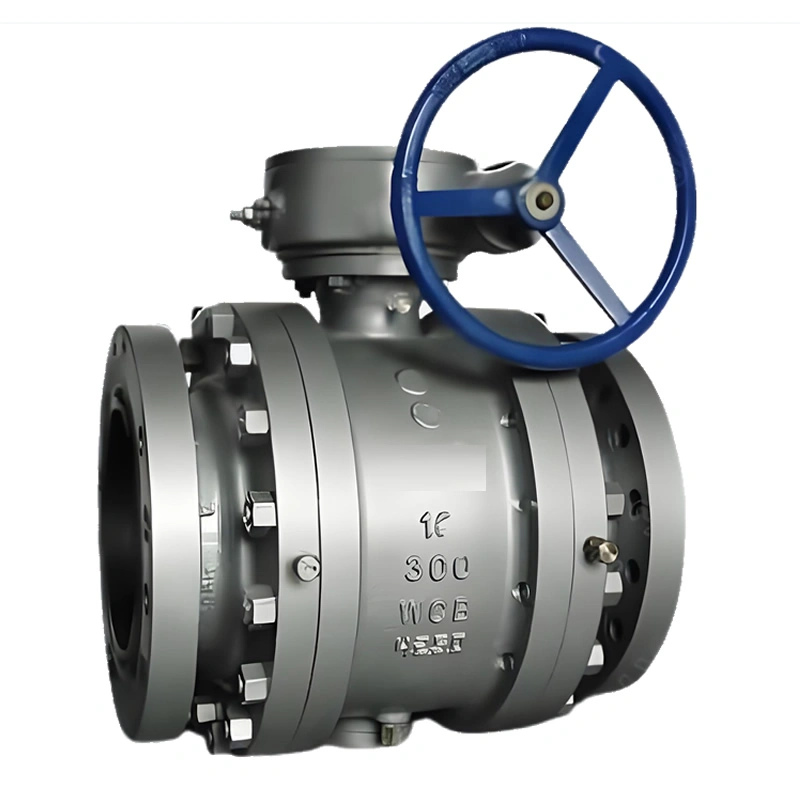- 2″ – 48″ (DN50 – DN1200)
- PN16 – PN420 | Class 150 – 2500
- API 6D, ASME B16.34, ISO 10434
- Carbon Steel (WCB), Stainless Steel (304/316), Duplex Steel (2205), Exotic Alloys (Inconel)
- Flanged (RF, RTJ per ANSI B16.5), Butt Weld (BW per ANSI B16.25)
- Side-Entry (On-line maintenance enabled)
- Metal-to-Metal (Spring-loaded, lapped surfaces)
- API 598 (Hydrostatic), API 607 (Fire-safe)
- Manual (Gear), Electric, Pneumatic, Hydraulic
Specification
DN100 PN40 Side-Entry Metal-Seated Trunnion Ball Valve
I. Product Overview
NEWWAY side-entry metal-seated trunnion ball valve is a high-performance flow control device engineered for extreme industrial conditions. Its side-entry design allows in-line maintenance without removing the valve from the pipeline, while the trunnion-mounted ball ensures stability under high pressure. Metal-to-metal seating delivers reliable shut-off for abrasive, corrosive, or high-temperature media, making it ideal for critical systems in oil, gas, chemical, and power industries where durability and safety are paramount.
II. Key Attribute Parameters
Size & Pressure: Covers 2″~48″ (DN50~DN1200) with pressure ratings from PN16 to PN420 (ANSI Class 150~2500), adapting to low, medium, and ultra-high pressure pipelines.
Temperature Range: -46℃~538℃, with material upgrades enabling operation in cryogenic (-196℃) or extreme high-temperature (650℃) environments.
Body & Trim Materials:
Body: Carbon steel (WCB), stainless steel (304/316), duplex stainless steel (2205), or exotic alloys (Inconel, Hastelloy) for corrosive media.
Ball & Seat: 316 stainless steel, Stellite-coated, or tungsten carbide for wear resistance; metal-to-metal sealing ensures tightness.
Connection Type: Flanged (ANSI B16.5, EN 1092), butt-weld (ANSI B16.25), or threaded, ensuring secure integration with pipeline systems.
Actuation: Manual (gear), electric, pneumatic, or hydraulic, with options for smart positioners (4-20mA) for automated control.
Standards: Complies with API 6D, ASME B16.34, and ISO 10434; tested per API 598 for pressure and leakage.
Product Overview
III. Structural Features
Side-Entry Design: Valve body splits horizontally, allowing access to internal components (ball, seat, stem) without disconnecting from the pipeline. This reduces maintenance downtime by 60% compared to top-entry valves, critical for continuous-process industries.
Trunnion-Mounted Ball: Ball is supported by upper and lower trunnions, distributing pressure loads to prevent deformation. This design eliminates “ball blowdown” risk in high-pressure systems, ensuring stable operation even under flow surges.
Metal-to-Metal Seating: Precision-lapped metal surfaces (Ra ≤0.8μm) create a bubble-tight seal (ANSI FCI 70-2 Class V). The seat features a spring-loaded design to compensate for thermal expansion, maintaining tightness across temperature cycles.
Safety Enhancements:
Anti-blowout stem: Prevents stem ejection under high pressure, meeting API 600 safety standards.
Anti-static: Stainless steel spring connects ball and body, dissipating static (resistance ≤10⁶Ω) to avoid sparks in flammable environments.
Fire-safe construction: Graphite backup seals ensure basic shut-off after fire, compliant with API 607.
IV. Manufacturing Processes
Material Forging: Body and ball are forged (forging ratio ≥3) to eliminate casting defects, enhancing structural strength. Raw materials undergo spectral analysis to verify chemical composition (e.g., 316: 16-18% Cr, 10-14% Ni).
Precision Machining:
Ball and seat: CNC-ground to achieve roundness ≤0.01mm and surface finish Ra ≤0.8μm, ensuring uniform contact.
Trunnions: Machined to tight tolerances to align with the ball, reducing friction and wear.
Seat Assembly: Spring-loaded seats are pre-tested at 1.5×rated pressure to validate compensation capability; metal surfaces are coated with anti-galling compounds (e.g., molybdenum disulfide) for smooth operation.
Testing: Each valve undergoes:
Hydrostatic shell test (1.5×rated pressure, 30 minutes) to check for leaks.
Gas tightness test (0.6MPa nitrogen) with leakage ≤0.1×10⁻⁶ mL/s.
Cycle test (1000+ operations) to verify durability.
Valve Details
V. Product Advantages
Easy Maintenance: Side-entry design allows in-line repair, cutting downtime from days to hours—vital for industries like refineries where shutdowns are costly.
High-Pressure Stability: Trunnion mounting and forged body withstand Class 2500 (42MPa) pressure, outperforming floating ball valves in ultra-high pressure systems.
Durable Sealing: Metal-to-metal seats resist abrasion, corrosion, and high temperatures, lasting 3× longer than soft-seated valves in harsh media (e.g., slurry, sour gas).
Wide Compatibility: Materials like duplex stainless steel and exotic alloys adapt to corrosive environments (e.g., seawater, acids), while cryogenic versions handle LNG and liquid nitrogen.
Safety Compliance: Integrates anti-blowout, anti-static, and fire-safe features, meeting safety requirements in oil, gas, and chemical plants with flammable or toxic media.
Application
VI. Application Fields
Oil & Gas: Upstream (wellhead, gathering lines), midstream (transmission pipelines), and downstream (refineries) for controlling crude oil, natural gas, and refined products.
Chemical Processing: Handles corrosive media (acids, solvents) in reaction loops, distillation columns, and storage tank farms.
Power Generation: Regulates steam (high-temperature, high-pressure) in boiler feed systems, turbine bypass lines, and flue gas desulfurization.
Mining & Minerals: Controls slurry, tailings, and abrasive fluids in mineral processing, where metal seats resist wear from solid particles.
Cryogenics: Manages LNG, liquid oxygen, and nitrogen in storage and transportation, with low-temperature materials preventing brittle fracture.

